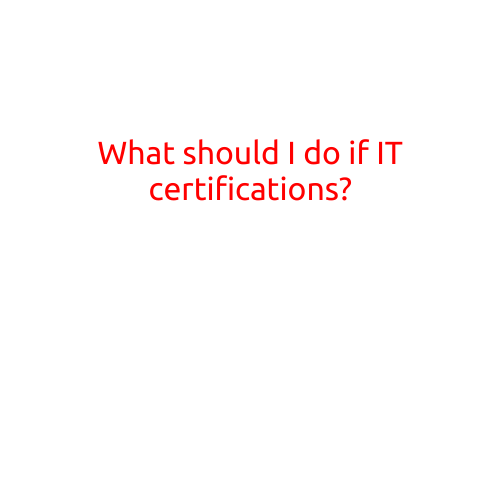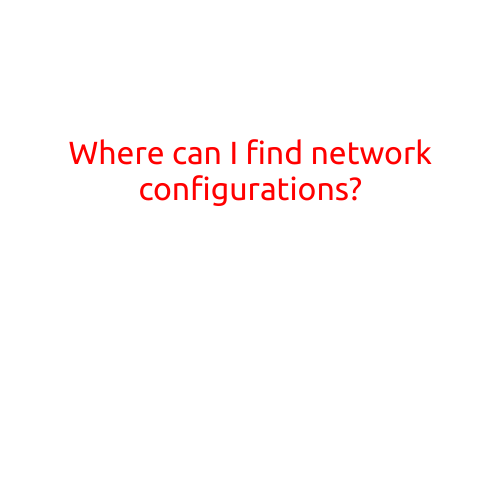
What Should I Do If Network Configurations?
In today’s digital age, networks play a crucial role in our daily lives, from personal browsing to professional communication. When something goes wrong with your network configuration, it can cause frustration, lost productivity, and even impact your business operations. In this article, we will explore the common issues that may arise with network configurations and provide you with step-by-step solutions to resolve them.
Common Issues with Network Configurations:
- Internet Connection Issues: This is one of the most common issues that people face. You may experience slow internet speeds, intermittent connectivity, or complete loss of internet access.
- Network Security Threats: With the increasing number of cyber-attacks, network security breaches can be devastating. You may notice unusual activity on your network, sudden changes to your setting, or even data theft.
- Router Configuration Issues: Mistakes in router configurations can lead to network disconnections, slow speeds, or poor coverage.
- Network Infrastructure Issues: Issues with network infrastructure, such as cabling, switches, or routers, can cause network downtime and data loss.
- Firewall Configuration Issues: Misconfigured firewalls can block important traffic, causing disruptions to your network.
Step-by-Step Solutions:
- Internet Connection Issues:
- Restart your router: Sometimes, a simple restart can resolve connectivity issues.
- Check your internet service provider (ISP): Contact your ISP to ensure there are no outages or issues on their end.
- Check your firewall settings: Ensure that your firewall is not blocking essential traffic.
- Network Security Threats:
- Run a virus scan: Use an antivirus software to detect and remove malware.
- Update your operating system and software: Ensure that all software is up-to-date to patch security vulnerabilities.
- Change your passwords: Reset your passwords to prevent unauthorized access.
- Router Configuration Issues:
- Log in to your router: Access your router’s configuration page to make changes.
- Check your settings: Verify that your settings are correct, and make necessary changes.
- Reset your router: If all else fails, reset your router to its default settings.
- Network Infrastructure Issues:
- Identify the issue: Determine the source of the problem, whether it’s a cabling issue or a switch problem.
- Consult a professional: If you’re not sure how to troubleshoot, contact a network administrator or IT professional.
- Replace or repair: Replace or repair any faulty network infrastructure components.
- Firewall Configuration Issues:
- Log in to your firewall: Access your firewall’s configuration page to make changes.
- Check your rules: Verify that your firewall rules are correct and allow essential traffic.
- Reset your firewall: If all else fails, reset your firewall to its default settings.
Prevention is the Best Solution:
While troubleshooting network configurations can be frustrating, prevention is always the best solution. To ensure smooth network operations, follow these best practices:
- Regularly update your software and operating system.
- Use strong and unique passwords.
- Use antivirus software and firewall protection.
- Monitor your network for unusual activity.
- Configure your router and firewall correctly.
By following these steps and best practices, you can reduce the likelihood of network configuration issues and ensure that your network runs smoothly and efficiently.





